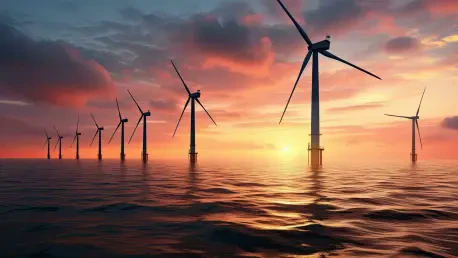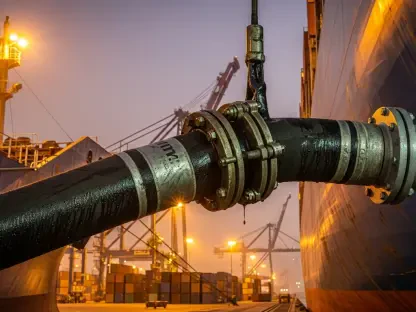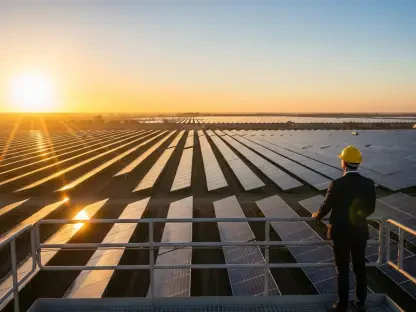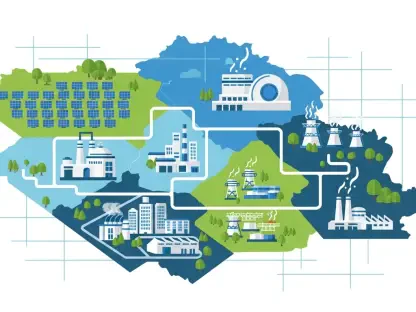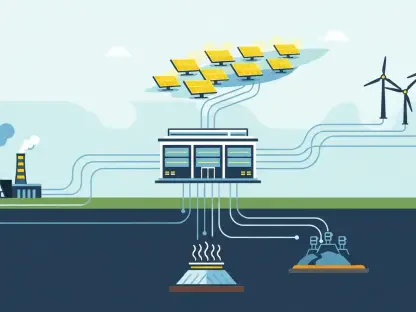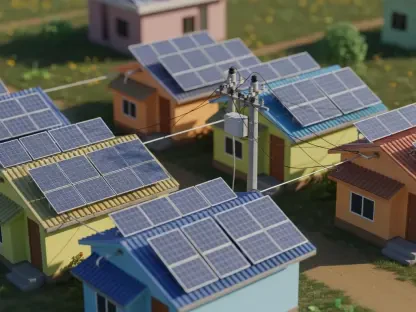I’m thrilled to sit down with Christopher Hailstone, a seasoned expert in energy management and renewable energy, with a deep understanding of electricity delivery and grid reliability. With his extensive background in the utilities sector, Christopher offers invaluable insights into the complex world of offshore wind farm development in the United States. Today, we’ll dive into the recent actions by the Trump administration to review offshore wind projects approved under the previous administration, exploring the motivations behind these decisions, the potential impacts on the industry, and the broader implications for renewable energy policy.
Can you walk us through the motivations behind the Trump administration’s decision to assemble a team of federal agencies to review offshore wind farms approved during the Biden era?
Certainly, Carlos. The decision to form this inter-departmental team stems from a mix of ideological and practical concerns within the current administration. Offshore wind was a cornerstone of Biden’s climate agenda, and the Trump administration appears to view it as misaligned with their energy priorities, which lean more toward traditional fossil fuels and deregulation. There’s also a narrative around national security, economic costs, and environmental impacts that they’re emphasizing. By involving agencies like Defense, Energy, Commerce, and Interior, they’re signaling a comprehensive reevaluation, likely focusing on whether these projects align with their broader policy goals or pose risks to other national interests.
How do you see the involvement of multiple federal departments shaping the scope and outcome of this review process?
The collaboration across these departments—each with distinct priorities—creates a complex dynamic. Defense might focus on potential conflicts with military operations, like radar interference or restricted airspace. Energy and Commerce could scrutinize economic viability and market impacts, while Interior would likely weigh environmental and land-use concerns. This broad approach suggests the review isn’t just a formality; it’s a deep dive that could lead to significant policy shifts. However, it also risks creating bureaucratic gridlock if these agencies have conflicting conclusions or agendas.
What do you think the overarching goal of reviewing these Atlantic coast offshore wind projects really is?
From what’s been publicly stated, the goal seems to be a reassessment of whether these projects should move forward at all under the current administration’s framework. President Trump’s own remarks about not allowing windmills unless there’s a prior legal commitment hint at a desire to halt or heavily restrict new developments. It’s less about fine-tuning specific projects and more about challenging the entire offshore wind industry’s role in the U.S. energy mix. This could mean outright cancellations or imposing new hurdles that make projects unfeasible for developers.
Could you shed some light on the stop-work order for the nearly completed wind farm off Rhode Island and what might have prompted such a drastic step?
The stop-work order off Rhode Island is particularly striking because the project was so close to completion, which amplifies the financial and logistical fallout. While specific reasons haven’t been fully detailed publicly, it’s likely tied to the administration’s broader skepticism of offshore wind. They might be pointing to environmental concerns, potential impacts on local industries, or even procedural issues with how approvals were granted under the previous administration. It’s a bold move that sends a clear message: no project is safe from scrutiny, no matter how far along it is.
How do you anticipate the cancellation of the wind farm approval off Maryland will influence the future of offshore wind in that region?
Canceling the Maryland project approval could have a chilling effect on future developments in the region. It signals to developers and investors that political shifts can upend even approved projects, introducing a level of uncertainty that’s toxic to long-term investments like offshore wind. Maryland and neighboring states along the Atlantic have been banking on these projects for clean energy goals and job creation, so this decision might push stakeholders to rethink their strategies or even look to other renewable options with less political baggage.
With the blade failure incident at a Massachusetts wind farm being highlighted by the administration, how do you think this event is shaping their broader stance on offshore wind safety?
The Massachusetts blade failure, where debris ended up on beaches, has become a convenient talking point for the administration to question the safety and reliability of offshore wind. It’s being framed as evidence of inherent risks, even though such incidents are relatively rare and often tied to specific design or maintenance issues rather than the technology as a whole. This event is likely fueling a narrative that offshore wind isn’t just costly but also a public hazard, which could justify stricter regulations or outright bans in their view.
There’s been mention of offshore wind being expensive and harmful to the fishing industry and whales. Could you unpack how these concerns are playing into the administration’s approach?
Absolutely. The cost argument is a big one—offshore wind projects require massive upfront investments, and critics argue that the electricity produced can be pricier compared to other sources, at least in the short term. On the fishing industry, there’s concern that wind farms disrupt traditional fishing grounds, both through construction and restricted access zones, which can hurt livelihoods. As for whales, the focus is on potential impacts from underwater noise during construction, which some studies suggest could affect marine mammal behavior, though the extent is still debated. These issues are being leveraged to paint offshore wind as a net negative, despite counterarguments about long-term benefits like reduced carbon emissions.
Looking ahead, what’s your forecast for the future of offshore wind development in the United States under the current political climate?
I think we’re in for a rocky period. The current administration’s actions suggest a strong push to slow or dismantle offshore wind growth, at least for the foreseeable future. Projects already in motion might face delays or cancellations, and new initiatives could struggle to gain traction without federal support. However, states along the Atlantic coast with strong renewable energy mandates may fight back through legal challenges or alternative funding mechanisms. Long term, the industry’s fate will hinge on political shifts, technological advancements that lower costs, and public opinion on balancing climate goals with local impacts. It’s a challenging landscape, but offshore wind isn’t going away—it’s just facing a steep uphill battle right now.
